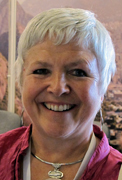Policy Bite: What is, or is not, Family Medicine?
 Definitions, models and limits.
Definitions, models and limits.
español
Amanda Howe, President Elect writes:
Many lectures and curricula begin with a definition – one commonly used in WONCA is:
- A doctor who is trained to deal with people across all life stages
- A medical generalist who can deal with all types of health problem at point of first contact in a community setting, and
- Offering a service that is comprehensive, accessible, focuses on a specific community, allows continuity over time, and is centred on the care of people - not specific parts of their body or diseases.[1]
I have seen three broad models of Family Medicine worldwide:-
- Single handed practitioner, with a list of patients who may or may not live locally: there may be one other member of staff supporting the doctor. The personal link over time can be strong, as this doctor is solely responsible for their patients.
- A group practice, with several doctors, often also with nurses and health care assistants.
- A ‘department’ or other institutional setting, in a hospital alongside other specialist services.
But, whichever model exists, within that we also need to look at the following variables:
1. Scope of practice- many family doctors are not using the full scope of the discipline in their particular setting or practice. For example, in U.K. family doctors are trained to see adults and children, also to do routine gynaecological and women’s and men’s health work – but in some countries family doctors only see adults, or do not do contraception or cervical cytology checks.
2. Relation to a population – some systems do not incentivise registration or continuity with a family doctor. Patients can switch providers frequently, or bypass primary care and go straight to hospital specialists. In some countries, family doctors may keep a registered ‘list’, but this may not be geographically based. A clinic which does not have continuity with its patients over time cannot easily implement preventive intervention programmes, nor identify unmet health needs and follow up on chronic disease management. And a clinic list which is not geographically based makes working with other agencies (e.g. community leaders, day care services) difficult.
Does this matter?
I think it does, at least at the level of the ‘system’. While individual circumstances and opportunities may vary, a health care system that does not implement the full scope of family medicine is likely to be less cost-effective. A doctor who cannot make a first assessment of most types of problems will not be able to supervise family medicine residents who need to learn to see a full breadth of patients. Individual doctors may choose a specific role in the course of a career which looks ‘less’ like family medicine. But we do need to be able to show the full range of our discipline in each country to allow it to be fully understood and utilised.
For countries ‘in transition’, where this is not yet possible, it is important both to be able to show some pilot schemes where there is ‘real’ Family Medicine (as in the definition at the beginning of this article), and to be able to discuss honestly and analytically how things would look different if the full ideal of family medicine was implemented across the system. At least in this way we can compare our current reality to a stronger future. It is also important to be clear about this when governments or funders propose a change in the system. Will it increase our ability to combine health promotion, prevention, screening, acute and chronic care for a group of patients over time? Or will the change proposed increase fragmentation and reduce the scope of our practice?
We need constantly to defend family medicine principles and to ensure that we work to enhance these over time.
[1]
http://www.woncaeurope.org/sites/default/files/documents/Definition%20EURACTshort%20version.pdf